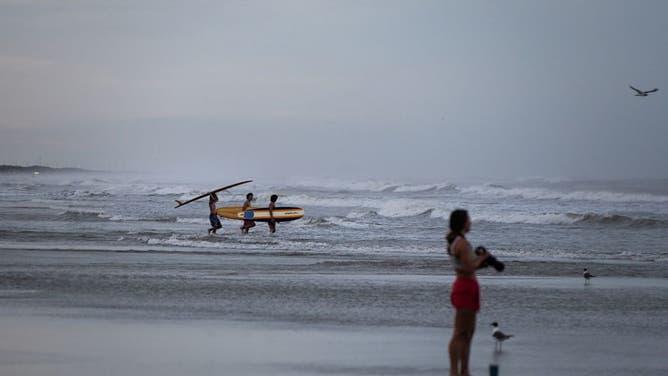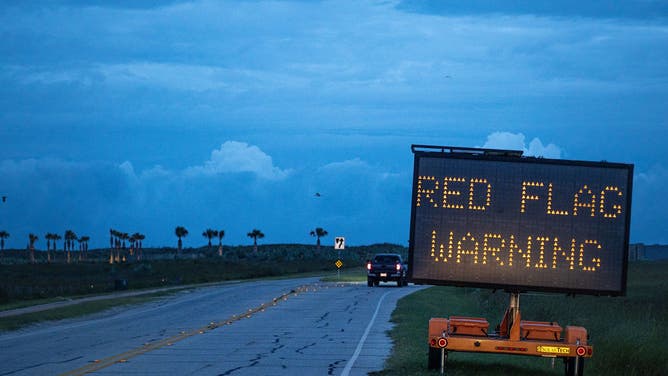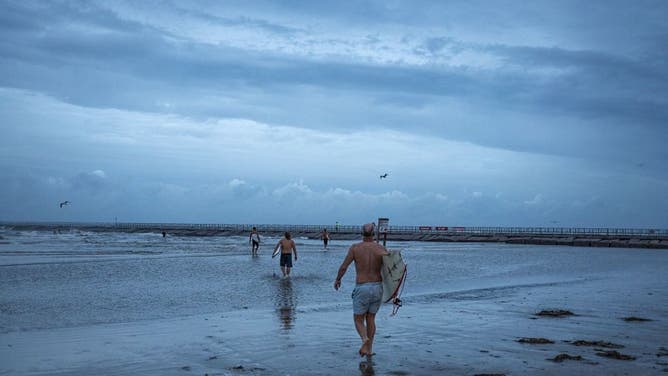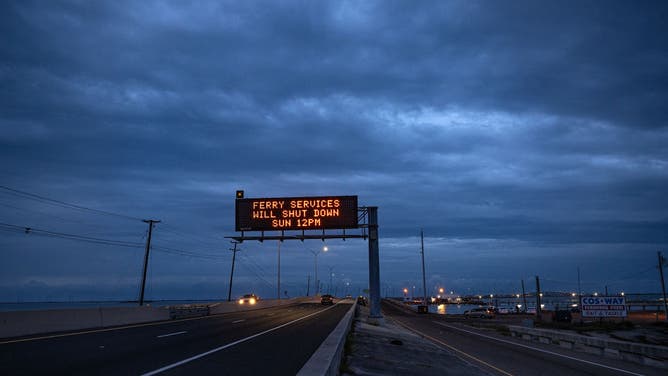Rip current threat increases along Gulf of Mexico beaches as Beryl's swell reaches shore
Beachgoers looking to venture into the Gulf of Mexico during the next several days will be met with increasingly rough conditions as swells from Beryl arrive in at least five states.
Bryan Norcross: Beryl intensifying as it nears Texas Gulf Coast
FOX Weather Hurricane Specialist Bryan Norcross describes the impacts Texans could see in the coming hours. Beryl is expected to intensify into a hurricane again as its showing signs of better organization.
Beachgoers looking to venture into the Gulf of Mexico during the next several days will be met with increasingly rough conditions as swells from Beryl arrive in at least five states.
According to the FOX Forecast Center, the threat for rip currents could be high in parts of Texas, Louisiana, Mississippi, Alabama and Florida.
The National Weather Service says life-threatening rip currents are likely in beach zones that are placed in a high risk and swimmers should avoid the water.
Beryl's landfall is forecast for Monday morning, as the storm is expected to intensify quickly back into a hurricane on Sunday.
A moderate risk indicates that rip currents are still present and pose dangers, but it does not necessitate lifeguards closing off sections of beaches to swimmers due to hazardous conditions.
BERYL TRACKER: LIVE FORECAST, TROPICAL WEATHER ALERTS, SPAGHETTI MODELS AND MORE

(FOX Weather)
Beryl is currently moving northwestward and is expected to make landfall along the Texas coastline on Monday.
Various tropical weather alerts, including a Hurricane Warning, Storm Surge Watch, Tropical Storm Warning and Hurricane Watch, have been issued for Texas, where storm preparations should be rushed to completion.
Despite being hundreds of miles away from the storm, Florida’s troubled coastline, where dozens of fatalities have occurred in recent years, is expected to see an uptick in waves and rip currents.
The National Weather Service office in Tallahassee, Florida, which covers forecasts for popular coastal communities such as Panama City Beach and Mexico Beach, is expecting a high rip current risk through at least Wednesday.

(FOX Weather)
FLORIDA’S BIGGEST WEATHER-RELATED KILLER LURKS ALONG BEACHES
Outside of shark attacks along beaches in Florida and Texas during the Independence Day week, the holiday was mostly filled with calmer ocean conditions than in weeks past.
A ridge of high pressure that dominated weather conditions helped to weaken the daily afternoon sea breeze and other weather phenomena that help pile water along the coast, increasing the risk of rip currents.
These hidden threats form when water piles up and creates a narrow, fast-flowing stream that swiftly carries swimmers away from shore, often catching them off guard.
Forecasters say Beryl's swell is pushing more water toward the shore, increasing the threat of rip currents.
AT LEAST 6 VISITORS KILLED IN FLORIDA AS DANGEROUS RIP CURRENT THREATS PERSIST
Some beaches in Alabama were flying red flags on Saturday, alerting swimmers to the dangers.
Many lifeguard organizations use colored flags as a way to alert beachgoers to the ever-changing ocean conditions.
A green flag indicates a low threat of hazardous conditions, while a double red flag means the water is closed to the public.
During most events where a fatality was caused by the surf, lifeguards were flying a single red flag, which means swimming is discouraged due to dangerous conditions.




